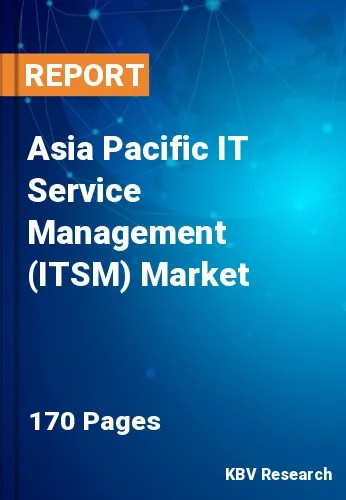The Asia Pacific IT Service Management (ITSM) Market would witness market growth of 14.2% CAGR during the forecast period (2023-2030).
Incident management is a core component of ITSM that focuses on promptly addressing and resolving disruptions to IT services. ITSM facilitates the rapid identification, logging, and resolution of incidents, minimizing downtime and ensuring the continuous operation of critical business functions. Problem management goes beyond incident resolution by identifying and addressing the underlying causes of recurring issues. ITSM enables organizations to conduct thorough root-cause analyses, reducing the recurrence of problems and enhancing the overall stability of IT systems. IT asset management involves tracking and managing an organization's IT assets throughout their lifecycle. ITSM assists in optimizing asset utilization, reducing costs through effective procurement, and ensuring compliance with software licensing agreements.
Service level management defines, measures, and manages service levels to meet business needs and expectations. ITSM helps organizations align IT services with business objectives, establish service level agreements (SLAs), and continually monitor and improve service performance. Knowledge management involves capturing, organizing, and sharing information to enhance problem-solving and decision-making. ITSM acts as a centralized repository for knowledge, facilitating collaboration among IT teams and improving the efficiency of issue resolution. Self-service portals enable end-users to resolve common issues and access relevant information independently. ITSM integrates self-service capabilities, empowering users to find solutions to common problems and reducing the workload on IT support teams.
China is actively promoting digital health initiatives to enhance healthcare accessibility and efficiency. With the increasing digitization of healthcare records, ensuring patient data security and privacy is crucial in China. In China, the use of remote patient monitoring and telemedicine is expanding. ITSM ensures a seamless experience for healthcare providers and patients in China by facilitating the implementation and support of these technologies. ITSM facilitates efficient appointment scheduling systems, reducing waiting times and optimizing patient flow within healthcare facilities in China. This contributes to improved patient experiences and streamlines operations in China. Therefore, due to the above-mentioned factors, the market will grow significantly in this region.
The China market dominated the Asia Pacific IT Service Management (ITSM) Market by Country in 2022, and would continue to be a dominant market till 2030; thereby, achieving a market value of $1,889.1 million by 2030. The Japan market is exhibiting a CAGR of 13.4% during (2023 - 2030). Additionally, The India market would experience a CAGR of 14.9% during (2023 - 2030).
Free Valuable Insights: The Global IT Service Management (ITSM) Market is Predict to reach $24.5 Billion by 2030, at a CAGR of 13.3%
Based on Organization Size, the market is segmented into Large Enterprises and Small & Medium-sized Enterprise. Based on Deployment Type, the market is segmented into Cloud and On-premise. Based on Offering, the market is segmented into Solution (Operations & Performance Management, Configuration & Change Management, Service Portfolio Management, Service Desk Software and Dashboarding, Reporting & Analytics) and Services. Based on Vertical, the market is segmented into BFSI, Government & Public Sector, Energy & Utilities, IT & Telecom, Media & Entertainment, Manufacturing, Retail & Consumer Goods and Healthcare & Lifesciences. Based on countries, the market is segmented into China, Japan, India, South Korea, Singapore, Malaysia, and Rest of Asia Pacific.
By Organization Size
By Deployment Type
By Offering
By Vertical
By Country
Our team of dedicated experts can provide you with attractive expansion opportunities for your business.

